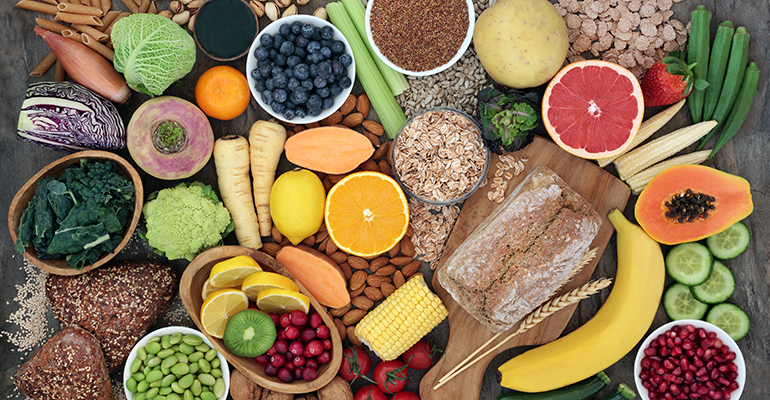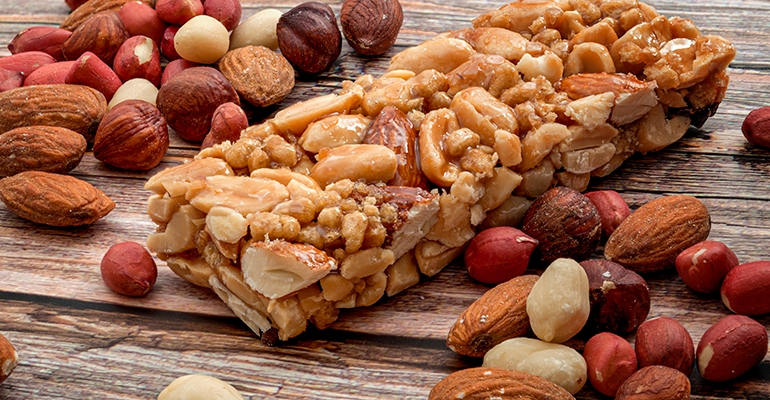News
Bioactives beneath the surface: Study explores fibre’s hidden benefits
1 Dec 2023
Research from the University of Minnesota explores the diverse bioactives found in insoluble dietary fibre and sheds light on the potential health benefits beyond conventional fibre advantages.
Widely known as roughage, insoluble dietary fibre (IDF) is a cornerstone of a balanced diet. Present in whole grains, nuts, seeds, and select fruits and vegetables, health professionals have long praised IDF for its role in promoting stool bulk and maintaining regular bowel movements. However, a September 2023 study from the University of Minnesota, published in Nutrients, suggests a deeper layer of benefits.

Co-authored by the University of Minnesota's department of food science and nutrition and Brightseed, a biotechnology company that commercialises healthy bioactive ingredients, the study aggregated existing literature on bioactives in various IDF sources. It revealed a previously overlooked aspect—the presence of unique bioactives. Each plant source of IDF was found to contain distinctive bioactives, which are extra-nutritional compounds found in trace amounts in plants. These provide health benefits beyond basic nutritional value and are associated with a lower incidence of cardiovascular disease, cancer, and type 2 diabetes.
The researchers investigated 30 sources of IDF, spanning from rice to stinging nettle. These sources underwent assessment for total phenolic content, total flavonoid content, and antioxidant activity, leading to the identification of 64 bioactive compounds. These included phenolic acids, flavonoids, and non-flavonoid categories such as tannins, tocopherols, tocotrienols, vitamin C, retinol equivalents, carotenoids, chlorophylls, and betalains. Noteworthy bioactives like quercetin, resveratrol, catechins, anthocyanins, lutein, lycopene, and beta-carotene were identified. Additionally, hemp seed hulls, constituting 22.25% IDF, contained bioactive compounds like lignanamides, known for their antioxidant and anti-inflammatory properties. In addition, spinach, a robust source of IDF, was found to contain bioactives such as chlorophylls, carotenoids, and tocopherols.
In a press release, lead author Madeline Timm emphasised the need to recognise the valuable components of fibre-containing plant sources. She said: “Fibre is the marker of health included in our dietary guidelines, but our research indicates that we need to ensure the other valuable components of fibre-containing plant sources—the bioactives—are also recognised as providing valuable benefits for human health.”
Increasing the nutritional value of foods through fortification
The study highlights the potential of fortifying processed foods by incorporating bioactives from IDF sources, thus increasing their nutritional value. Jan-Willem van Klinken, co-author of the study and senior vice president of medical, scientific, and regulatory affairs for Brightseed, commented on the research, stating: “If we can offer widely accessible fibre-fortified products that enhance rather than negate bioactive content, we can provide consumers with increased nutritional value.”
 © iStock/Moussa81
© iStock/Moussa81
While there is potential for fortification, a crucial aspect is ensuring the marketability of these products to consumers. Consumer acceptance plays a vital role in fortifying processed foods, with the study recognising the need to consider consumer preferences. The researchers found that while customers may hesitate to try products with visible changes, such as pink-hued bread due to the addition of sour cherry pomace, many consumers are attracted to products with added health benefits. Findings suggested that even at low levels of fortification, the consumer acceptability of the food product remains unaffected.
This opens a potential avenue for the food industry, allowing manufacturers to incorporate bioactives into processed foods, enhancing the nutritional profile, without sacrificing taste or consumer acceptance. This also aligns with broader trends of promoting health through diet and meeting consumer demands for functional foods that contribute to overall well-being.
Navigating the future of fibre intake
While the study's practical implications appear promising, global challenges in fibre intake may hinder the widespread adoption of bioactive-enriched products and initial appeal might be limited to those already interested in functional foods and aware of IDF's importance.
Highlighting this fibre gap, the study calls for collaboration between industry, academia, and government to elevate awareness about bioactives in food and health systems. Timm envisions a potential paradigm shift, stating: “The collection of literature we reviewed, and the results of this research can serve as a paradigm shift in how the food and health industries, as well as consumers, view IDF and bioactives.”
Joanne Slavin, co-author of the University of Minnesota study, co-authored a 2022 paper, which emphasised the gap between dietary fibre recommendations and actual intake, finding that only a small proportion of the global population meets the recommendations for dietary fibre intake. This is supported by other research, including that of the UK Food & Drink Federation, which reports that only 9% of adults meet the recommended dietary intake.
Addressing the challenge, van Klinken said: “The suggestion to eat more fruits and vegetables isn’t a novel idea, but it’s something most people still struggle to do [...] If we can offer widely accessible fibre-fortified products that enhance rather than negate bioactive content, we can provide consumers with increased nutritional value.”
As functional food, health and wellness, and other food trends become more mainstream, and as dietary guidelines promote increased plant food and IDF consumption, the study holds the potential to reshape perspectives on fibre intake, contributing to a more comprehensive approach to health and wellbeing.
